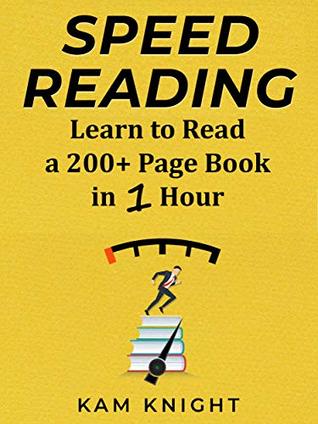More on this book
Community
Kindle Notes & Highlights
by
Kam Knight
Read between
February 17 - February 18, 2024
The last and most popular option to break the subvocalization habit is to listen to music. Play it loud enough so that you can't hear yourself think,
music without words or lyrics, such as classical, instrumental, or electronic,
Speed reading, as we’ve discussed, is about picking up more words in a single glance or fixation. In order to effectively develop this ability, it’s critical to expand your visual range. Visual range is the ability to see objects beyond your direct line of sight.
The Shultz Table is a table or grid, usually with 3x3, 4x4, or 5x5 dimensions, filled with numbers, letters, or words.
The first step to comprehension is paying attention to the main idea or overarching point the writer is trying to communicate.
To improve comprehension, pay attention to the main points or the big picture, so to speak, and the broader context. When sifting through a lot of details, take an occasional step back to identify how
those details relate to the overall message the author is trying to communicate.
In formal writing, paragraphs consist of three parts: topic sentence, supporting sentences, and concluding sentence.
the topic sentence presents the paragraph’s idea.
supporting sentences
are the details that describe, illustrate, communicate, or explain the topic sentence using facts, reasons, examples, definitions, comparisons, and other pertinent info.
The concluding sentence brings the paragraph to a close.
a strong vocabulary is essential to increasing reading speed.
we forget up to 80 percent of what we hear, see, or learn within a few hours of hearing, seeing, or learning it!
what I term Recall and Review. While reading, stop at some point and recall what you just read or learned up to that point. You can stop either every half hour or so, or every chapter, lesson, or subsection.
A great time to practice recall and review is after returning from breaks. When you return to a book after putting it down, quickly recall what you’ve read so far before moving ahead.
Recall and review is especially useful at the end. After finishing a book, article, or any other piece of writing, take a moment to reflect on it.
recall promotes focus.
Visualization is the act of forming images in your mind. It’s similar to daydreaming, except instead of letting
the mind run the images, we sit in the director’s chair and take conscious control of the scenes.
Space Reading or chunking, employing peripheral vision, and reducing subvocalization, fixation, and regression.
Exercise 1—Left and Right
Perform this right-to-left, then, left-to-right motion 10 times without moving your head.
Exercise 2—Eye Roll
Repeat each direction 5 times, exaggerating the movement to stretch those muscles
Exercise 3—Figure 8s
Exercise 4—Plus sign
Exercise 5—Scream and Squeeze
Exercise 6—Blinking
Exercise 7—Eye Massage
Staring at text for long periods dries out the eyes, as they don’t blink as often as they should. It also weakens their muscles,
every hour or so and disengage for a few minutes. During that time, avoid looking at any text or screens of any type
direct vision on an object about 20 feet away. If you like, gaze out the window. Maintain that focus anywhere from 20 seconds to 2 minutes.


